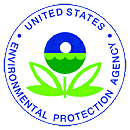Environmental Information for Sweeping Professionals |
EPA Tightens Clean Air Standardsby Ranger Kidwell-Ross
The United States EPA recently enacted changes in air and stormwater legislation which will have a significant impact on sweeping as a BMP for reducing air and stormwater runoff particulate levels. The following was entirely excerpted from information provided by the USEPA on its website, which is located at www.epa.gov. Significant new information on the health effects of ozone and particulate matter (PM) has become available since the last review of the national ambient air quality standards (NAAQS). As a result, the United States EPA issued new, updated ozone and PM standards which were signed by Administrator Carol M. Browner on July 16, 1997. EPA held a national satellite broadcast July 24th to explain the contents of the new standards, activities the USEPA conducted to reach a decision, and future activities related to implementing the standards. This recent action marks the first modification in 20 years for ozone (smog) and the first in 10 years for particulate matter (soot). The updated standards, a major step forward in public health protection, will protect 125 million Americans, including 35 million children, from the health hazards of air pollution. According to USEPA estimates, each year these new, updated standards will prevent approximately:
BackgroundThe characteristics, sources, and potential health effects of larger or 'coarse' fraction particles (from 2.5 to 10 micrometers in diameter) and smaller or 'fine' particles (smaller than 2.5 micrometers in diameter) are very different. Coarse particles come from sources such as windblown dust from the desert or agricultural fields, and dust kicked up on unpaved roads by vehicle traffic. Fine particles are generally emitted from activities such as industrial and residential combustion and from vehicle exhaust. Fine particles are also formed in the atmosphere when gases such as sulfur dioxide, nitrogen oxides and volatile organic compounds, emitted by combustion activities, are transformed by chemical reactions in the air. Studies show particles of 10 micrometers or less are the greatest health concern, penetrating deep into the lungs.Coarse particles can accumulate in the respiratory system and aggravate health problems such as asthma. EPA's scientific review concluded that fine particles, which penetrate deeply into the lungs, are more likely than coarse particles to contribute to the health effects (e.g., premature mortality and hospital admissions) found in a number of recently published community epidemiological studies at concentrations that extend well below those allowed by the current PM-10 standards. Before 1987, EPA's standards regulated larger particles (so called 'total suspended particulates'), including those larger than 10 micrometers. By 1987, research had shown that the particles of greatest health concern were those equal to or less than 10 micrometers (PM-10) that can penetrate into sensitive regions of the respiratory tract. At that time, EPA and [individual] States took action to monitor and regulate particulate matter 10 micrometers and smaller. In the years since the previous standard was enacted, hundreds of significant new scientific studies have been published on the health effects of particulate matter. Recent health effects studies suggest these adverse public health effects, such as premature deaths and increased morbidity in children and other sensitive populations, have been associated with exposure to particle levels well below those allowed by the current standard. Combined with the Implementation Package announced by EPA, these public health protections will be achieved in flexible, common sense and cost-effective ways - providing for both cleaner air and the nation's continued economic progress. By encouraging innovation, cooperation and the development of new technologies for pollution reduction, these updated standards build upon the spirit of ingenuity that is the foundation of America's leadership in the world. The first priority will be to establish a comprehensive monitoring network (comprised of 1,500 monitors) to determine ambient fine particle concentrations across the country. The monitoring network will help EPA and the States determine (1) which areas meet or do not meet the new air quality standards, (2) what are the major sources of PM-2.5 in various regions, and (3) what action is needed to clean up the air. Given that health effects from coarse particles are still of concern, the overall goal during this transition period is to ensure that PM10 control measures remain in place to maintain the progress that has been achieved toward attainment of the current PM10 standards (which provides benefits for PM-2.5) and protection of public health. To ensure that this goal is met, the existing PM10 standards will continue to apply until certain critical actions by EPA, and by states and local agencies, have been taken to sustain the progress already made. For areas not attaining the existing PM10 standards today, those standards remain in effect until EPA completes a rule to prevent 'backsliding,' or removal of controls needed to achieve clean air. EPA will propose this rule in Fall 1997. Consistent with States' ultimate responsibility to attain the standards, EPA will encourage States to design strategies for attaining the PM and ozone standards that focus on getting low cost reductions and providing ...the ability to limit their cost of control to under $10,000 per ton. Anyone with a computer and a modem can access this information through EPA's website. To order a video copy of the broadcast, contact Christine Murphy, IES-Environmental Programs, North Carolina State University, Box 7902, Raleigh, NC 27695. You can also reach her via phone at 919-515-5875. Ask for video tape number T-018-97 (Announcement of the Ozone and Particulate Matter National Ambient Air Quality Standards). Cost: $25; Delivery Time: 4-6 weeks. Make checks payable to North Carolina State. This article is reprinted from American Sweeper magazine, Volume 6 Number 2. |
© 2005 - 2021 World Sweeper
|
Back to Environmental InformationSite Map / Table of Contents |